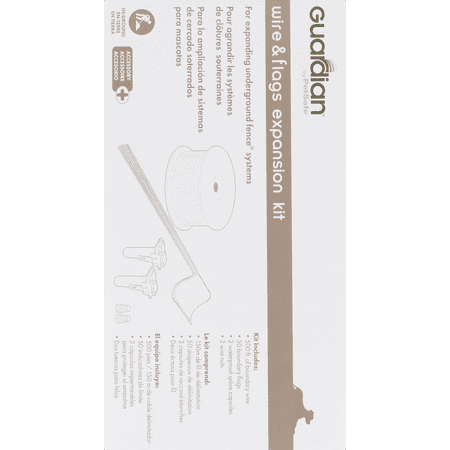Guardian Underground Fence Pg-1010 Manual
Guardian Underground Fence Pg-1010 ManualDownload Free Software Programs Online. User Manual Guardian Pet Fence Pg-1010 Get manuals & product support. Contact Points. Operating and. Training Guide. Collar w/Short. Contact Points. (PetSafe® RFA-67). Installation and Training. System works by producing a radio signal from the Fence Transmitter through up to 2800 feet of Boundary Wire. Instructions in Step 6. Keeps your pet safe in your yard. The Guardian® Underground Dog Fence® is a smart, affordable way to keep your pet secure in your yard. Set your pet’s boundaries.
An invisible pet fence is a loop of wire barely underground, reportedly broadcasting at 600kHz, although other reports say 10.65kHz. There's a popular method for finding a break in the wire loop that involves placing onto the transmitter, in parallel with the broken loop. Some write-ups suggest you additionally wrap the ends of the broken loop wire around the leads of the choke before reconnecting to the transmitter, instead of just putting them in parallel. You then use a portable AM radio tuned to ~600kHz to scan for the lack of a throbbing signal, indicating the location of the break. Many folks have had luck with this, so I'm sure it works at least for some systems. I'd like to understand why this works, and whether we can improve on it.
I understand that one role of the choke is simply to provide continuity. Miller Heiman Strategic Selling Blue Sheets. That allows the transmitter to stop beeping and produce the signal. If that was all it was doing though, why not use a resistor? Because the choke won't allow AC to pass and therefore keeps the RF signal stronger into the boundary wire loop?
Another suggestion is that wrapping the boundary wire leads around the choke leads provides a crude isolation transformer. Pulses through the leads of the choke are picked up by the wrapped wire. Perhaps this increases the signal you would get without wrapping? Any suggestions or insights? EDIT Is there a way to identify a similar choke in my parts heap? I've probably got a bunch of them, but I've never used one and don't know what I'm looking. EDIT2 Well, I lucked out: An old solar light had a 100µH inductor on it (brown, black, brown, silver, measured resistance at ~3Ω, so it's not a resistor).
It's smaller than the 'choke' available at RS but has the same impedance rating. Any reason to think it won't work? It's roughly 1/4' long and 3/16' wide and green, fwiw.

Yes, 'hidden' or 'buried' would be more accurate, but we can't let that get in the way of good marketing. Getting back to my doggie dilemma, can ANY inductor be pressed into duty as a choke?
As I understand it, 'choke' defines the application, not the device itself. I guess I'm wondering if the frequency of the application would make you choose one inductor over another despite identical inductance ratings. I think the core material matters. The RS device is called an 'RF choke' and must have the right core for that application.
The little inductor I pulled from an old solar light may not? I think it works (no smoke!) but I've learned that this is a PetSafe system, which doesn't use 600 kHz. So my AM radio could detect a pulsing, but only when held directly against the inductor. Serial Ve Crack Bulma Programming. Holding it against the perimeter wire gave me nothing.
I tried the entire AM band, and was hopeful when I got a little something at 600 kHz, but that was all. The PetSafe solution is a $50 transmitter that you use as a stand-in for the regular dog zapper. It put a different tone on the two wires, so it's easy to tell where one ends and the other begins. Still looking for a clever (meaning cheap ) solution to detect a wire break in a dog fence. The PetSafe system broadcasts at 10.65kHz thru the perimeter wire as an antenna.